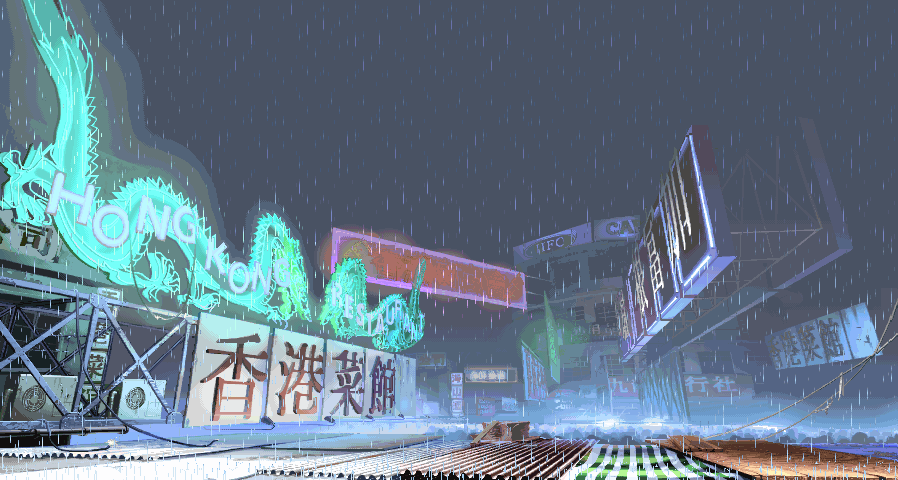I have been Jedi-pilled once again
Remembering every fake Han Solo.

In high school, my friends (very cool guys) had an ongoing game where you’d try to use a line from the original Star Wars trilogy in normal speech. The idea was to pick such an ordinary line that no one would notice unless they had the movies memorized. If someone caught it, they’d try to fit another quote into their response, without giving up the game to other listeners. “He really is in first-class condition,” for example, was a good pick — it’s an interesting thing to say, but nothing about it R2D2-screams Star Wars.
Everyone was good at this game because we’d watched the movies nonstop from ages 6-13. It was funny to be such a Star Wars knower that you could quote the dullest passages like scripture. But our real affection for the franchise, as a playground for the imagination rather than a text for recitation and disputation, waned as the prequels came out. It felt like we cashed out our Star Wars nostalgia bit by bit, and the whole currency took a nosedive with each new movie.
My personal reserve of Star Wars fandom ran out in that prequel era, and I haven’t cared much about the brand since. (Clay had to tell me that “Star Wars Day” is this week.) Now it’s a content mill owned by an asset-management firm, like the MCU, DCU, Jurassic Park U, Dark U, American Godzillaverse, etc. Once you extract enough value, people stop getting sentimental about what’s left.
Or that’s what I would have said a couple of months ago. Then I played the remaster of Star Wars: Dark Forces, which single-handedly restored my once-high opinion of the Jedi order.
Dark Forces is from the dawn of time. It could only bring scraps of Star Wars to computer screens in 1995, but presented each fuzzy article like a rare prize. From a distance, it’s just a Doom clone where you run around imperial bases blasting everything (a “corridor-crawler”). But when you’re in its world, charging through passageways in huge galumphing steps, you can feel the LucasArts aura again. You can still see the power of Ralph McQuarrie’s original sketches — eggshell imperial hallways and mirror-finish floors — transmitted through the movies and into a new 2.5D reality. The appearance of a mouse droid, the Death Star light panels, or a Lambda shuttle is miraculous.
The game’s all about the adventures of Kyle Katarn, a very mildly roguish guy who carries 10 guns at once, as was the style at the time. The workhorse of his weapon collection is the standard-issue E-11 blaster rifle, which they made horribly inaccurate, maybe as a joke about imperial marksmanship. You quickly figure out the gun to use when you’re ammo-rich (the invented Imperial repeater), the one for when you’re broke (the E-11), and the one for killing bosses (the assault cannon). You also get thermal detonators, which are useful for killing yourself.

Dark Forces feels closer to the old world of Star Wars than stuff like 2019’s Fallen Order. Maybe that’s because it actually is 25 years closer, or because it’s a genuine LucasArts product. Or maybe it’s just that it looks different — its scruffy pixel translations of the series staples look like art, and the asset-farm photorealism of today’s AAA productions does not.
But the new games are also bogged down by an accumulation of influences that have become cruft. They’re slow. They’ve inherited boring ideas about tutorials and skill trees, they live in the shadow of better action games, and they’re followed by the Force ghosts of Kyle Katarn and Dash Rendar and all the other fake Han Solos, hovering and giving conflicting advice.
Dark Forces just says: here’s Star Wars, now shoot it. It didn’t have the tools for movie-grade storytelling and was excused from attempting any. Freed from the narrative baggage that weighs down almost all projects in the setting, it could just hand you a blaster that doesn’t shoot straight and launch you into corridor mazes full of Trandoshans and squealing Gamorreans. It was all about reproducing the audiovisual palette of the films and adding the few flourishes they could manage. They didn’t have the budget for Jabba, but they created a sick bas-relief:
Doodling in the margins was always what made the original 1977 Star Wars work. The camera doesn’t move much, but a lot of amazing stuff toddles in front of it — wandering gonk droids, Figrin D'an and the Modal Nodes, hammerhead aliens, dianoga eyestalks. The constant stream of creature-shop inventions and miniatures led Pauline Kael to dismiss the movie as “an assemblage of spare parts,” but today it looks like a creative explosion that was never equaled. They had the greatest SFX minds of all time working around the clock to create a toybox that would ruin popular cinema forever! It was like Jodorowsky’s Dune but real! Lucas’s impulse to put a weird meatball guy in the background of every shot did, of course, go fatally awry in the Special Editions and later films, but that just shows how rare the balance struck by the original trilogy was.
The good stuff they designed to fill the frames of Star Wars became the raw material for Dark Forces. And one of the greatest virtues of the game is that it’s not at all curious about the histories of all these gadgets and aliens and designs, which are for once just treated as scenery in a blast-or-get-blasted world. Technological limitations save it from the Star Wars curse of wallowing in backstory and mythology, much as technological limitations saved George Lucas from making Han Solo a big alien frog.
Dark Forces is the first shooter I’ve actually beaten since Cruelty Squad, another great game with greasy movement and a horrible soundtrack. I’m now about halfway through Jedi Knight, the more decorated sequel to Dark Forces, and would also recommend it to anyone. The Doom-like pivoting billboard enemies of the first game turn into Thief-like 3D enemies with heads that look like they’re carved out of wood; the levels sprawl up and out, until they really do suggest a vertiginous Star Wars city. Both games also have sections where you jump between a series of waterslides, for reasons known only to LucasArts staff.
But the best part of Jedi Knight are its live-action FMV cutscenes, which look like the result of someone giving you and your friends one weekend on the Disney lot to shoot an entire Star Wars movie. Though I find these cutscenes charming, and very concise, they do also anticipate the plague of green screens in later Star Wars films:
Anyway, a very long cooldown finally elapsed, and I no longer had the entire shooting script of Star Wars saved in my head, so I watched it again. Pretty good! I’ve always liked the fan take that the movie is dialed in on the journey of an object, not a hero. It’s just tracking the movement of the Death Star plans from the consular ship at the start to the rebel base at the end, where they serve as the schematic for one of the most complicated setpieces in movie history. Obscured behind an endless procession of weird little guys is a direct, mechanical satisfaction: you follow the arc of a grenade until it explodes.
If you’re interested, the 4K77 project seems like the best way to watch it now (you can find the huge 4K file on the torrent site of your choice.) In honor of Star Wars day, which isn’t even today, here’s some trivia that I either never knew or forgot about:
- The shot of the Tusken raider lifting his stick and yelling “URoRRuR'R'R” is a shorter take reversed and replayed several times.
- Carrie Fisher does a British accent for one scene for no reason.
- The AT-ATs from Empire are based on concept art from a brochure that Syd Mead created for U.S. Steel. Nice work if you can get it.
- The imperial probe droid was based on a tiny blob Moebius once drew.
- Jabba the Hutt was based on a friend of the Michelin Man.
Hey! If you want more posts like this, please subscribe and share EX.






